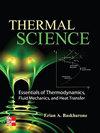Microchannel topology optimization based on enhanced heat transfer mechanism
IF 1.1
4区 工程技术
Q4 THERMODYNAMICS
引用次数: 0
Abstract
Topology optimization modifies the material distribution in the design domain to produce microchannel structure with improved thermal performance. In this work, five heat dissipation microchannel structures with various design domain aspect ratios are optimally designed based on the bi-objective topology optimization method. The optimal design variable fields, temperature fields, and pressure fields are subsequently obtained for each operating condition, and the flow heat transfer effect and the enhanced heat transfer mechanism are investigated under various working conditions. On this basis, the flow heat transfer impact of microchannels under various operating situations is optimized and studied by combining the field synergy concept and entransy dissipation theory. The findings show that when the Reynolds number rises in the laminar flow region, the complexity of the topological flow channels also rises. The average temperature Tave decreases, Nu rises, the inlet and outlet pressure drop ?P gradually increases, the integrated enhanced heat transfer factor PEC gradually decreases, the field synergy number Fcincreases, the pressure drop synergy angle ? gradually increases, the entransy dissipation Evhincreases, and the flow heat transfer performance of each heat dissipation channel is also enhanced due to the complex channels and high Reynolds number in the domain. The investigation of microchannels with various topologies revealed that the microchannels with the same boundary conditions and a design domain aspect ratio of 25/64 had the best synergy effects of velocity-pressure gradient and velocity-temperature gradient, the best heat transfer effect, and the best flow characteristics.基于强化传热机制的微通道拓扑优化
拓扑优化改变了材料在设计域中的分布,从而产生了具有更好热性能的微通道结构。本文基于双目标拓扑优化方法,对具有不同设计域宽高比的5种散热微通道结构进行了优化设计。得到了各工况下的优化设计变场、温度场和压力场,并对不同工况下的流动换热效果和强化换热机理进行了研究。在此基础上,结合场协同概念和能量耗散理论,对不同工况下微通道的流动换热影响进行优化研究。研究结果表明,层流区雷诺数增大时,拓扑流道的复杂性也随之增大。平均温度Tave减小,Nu升高,进出口压降?P逐渐增大,综合强化换热系数PEC逐渐减小,场协同数fc增大,压降协同角?逐渐增大,能量耗散evhh增大,且由于区域内通道复杂、雷诺数高,各散热通道的流动换热性能也得到增强。对不同拓扑微通道的研究表明,在相同边界条件下,设计畴宽高比为25/64时,微通道的速度-压力梯度和速度-温度梯度协同效应最好,换热效果最好,流动特性最好。
本文章由计算机程序翻译,如有差异,请以英文原文为准。
求助全文
约1分钟内获得全文
求助全文
来源期刊

Thermal Science
工程技术-热力学
CiteScore
2.70
自引率
29.40%
发文量
399
审稿时长
5 months
期刊介绍:
The main aims of Thermal Science
to publish papers giving results of the fundamental and applied research in different, but closely connected fields:
fluid mechanics (mainly turbulent flows), heat transfer, mass transfer, combustion and chemical processes
in single, and specifically in multi-phase and multi-component flows
in high-temperature chemically reacting flows
processes present in thermal engineering, energy generating or consuming equipment, process and chemical engineering equipment and devices, ecological engineering,
The important characteristic of the journal is the orientation to the fundamental results of the investigations of different physical and chemical processes, always jointly present in real conditions, and their mutual influence. To publish papers written by experts from different fields: mechanical engineering, chemical engineering, fluid dynamics, thermodynamics and related fields. To inform international scientific community about the recent, and most prominent fundamental results achieved in the South-East European region, and particularly in Serbia, and - vice versa - to inform the scientific community from South-East European Region about recent fundamental and applied scientific achievements in developed countries, serving as a basis for technology development. To achieve international standards of the published papers, by the engagement of experts from different countries in the International Advisory board.
 求助内容:
求助内容: 应助结果提醒方式:
应助结果提醒方式:


